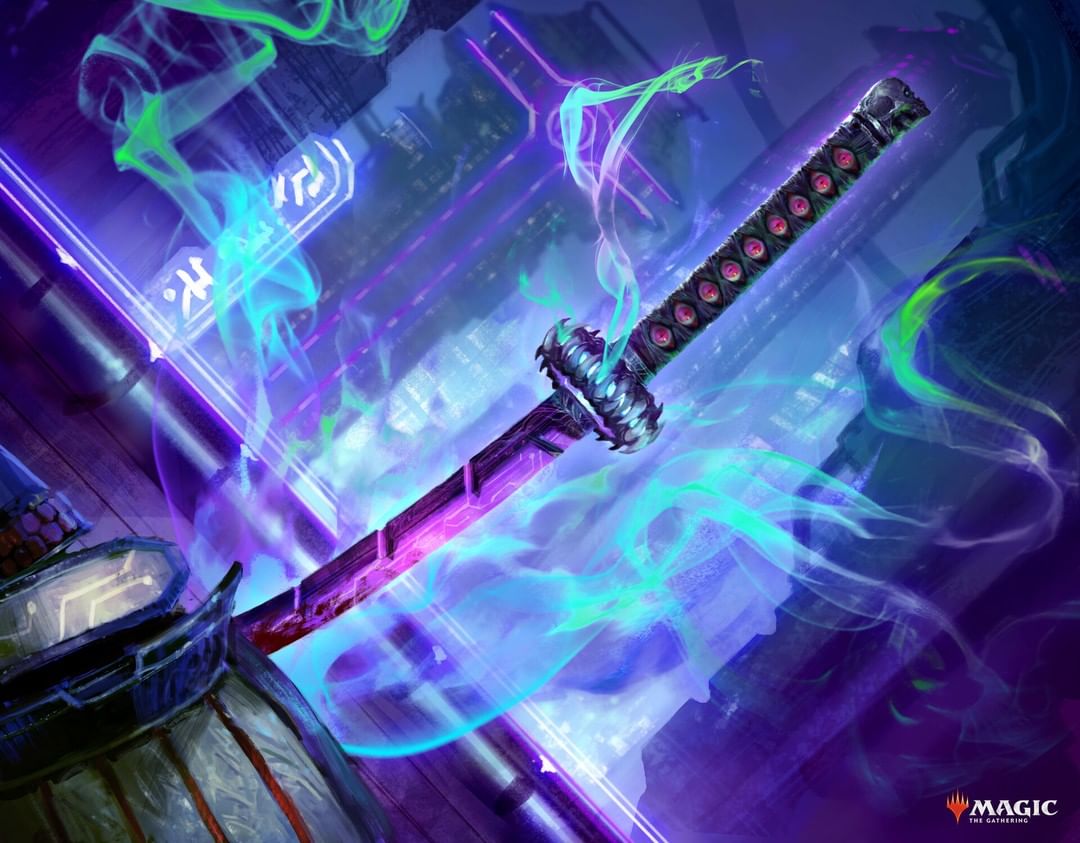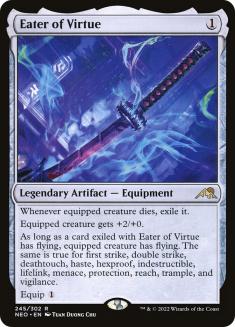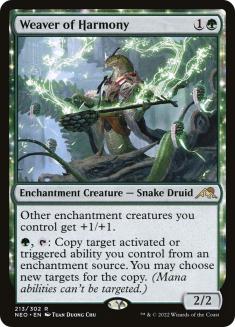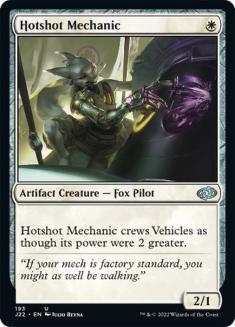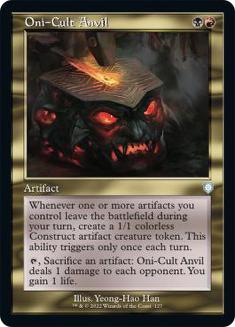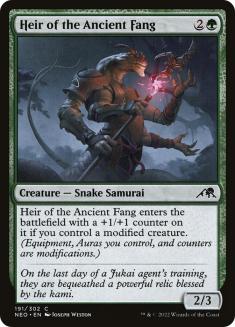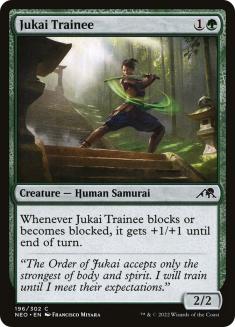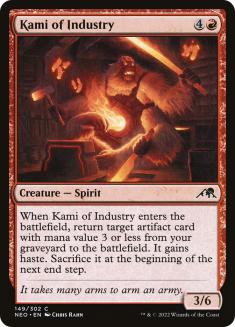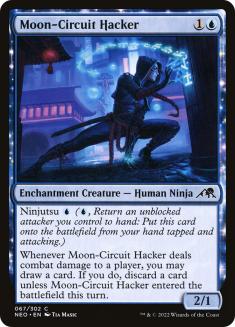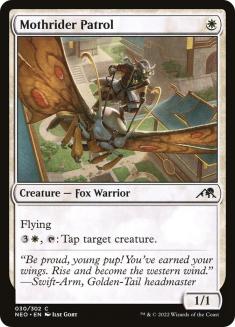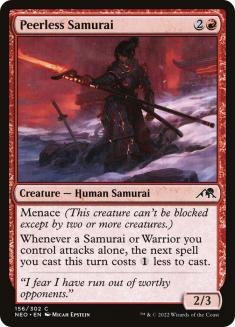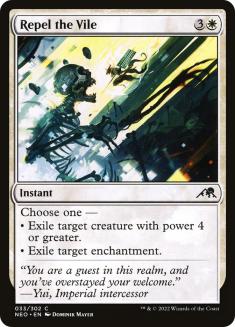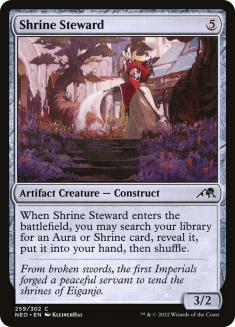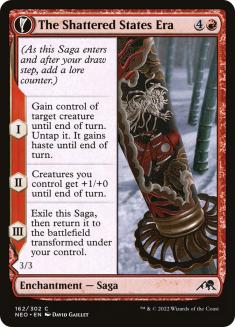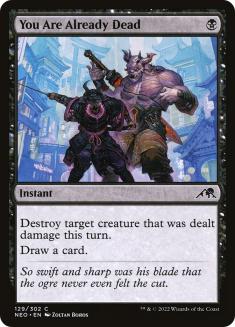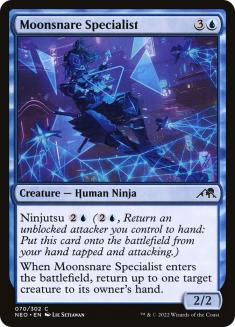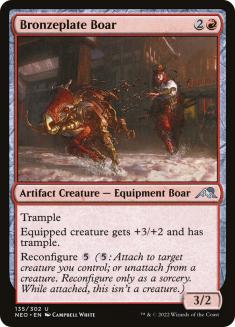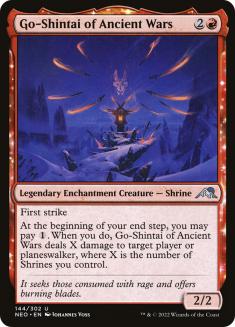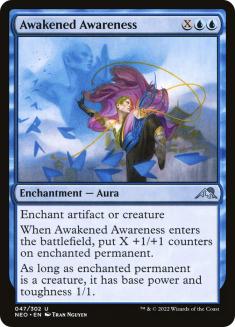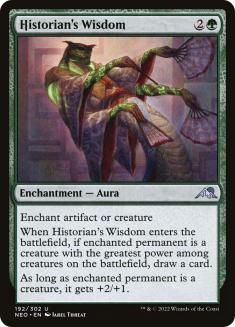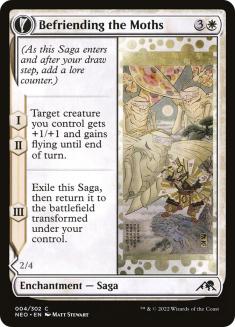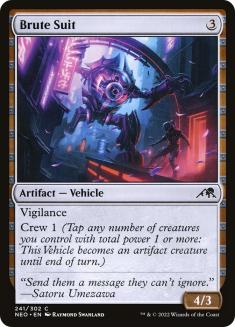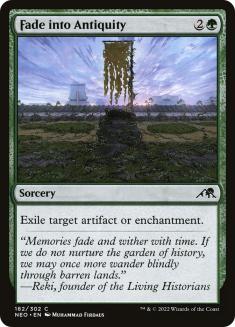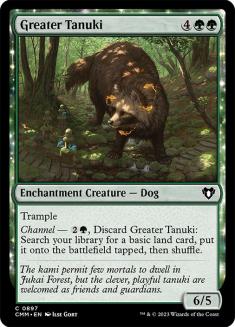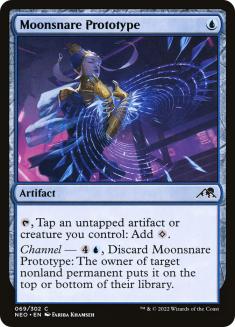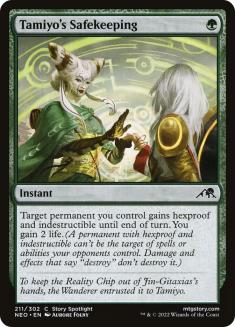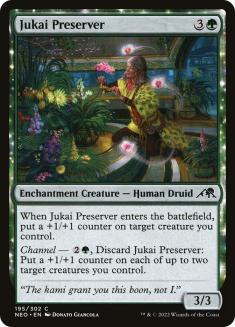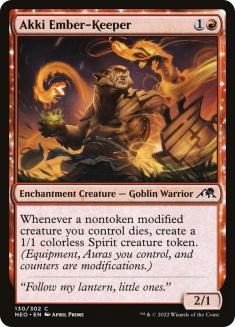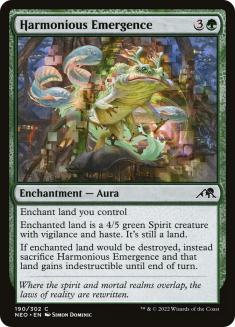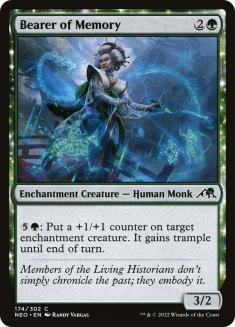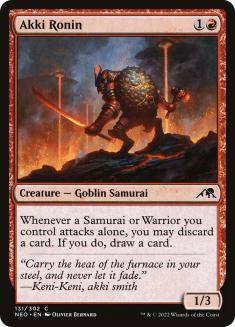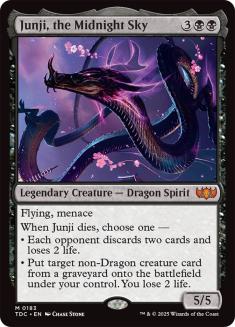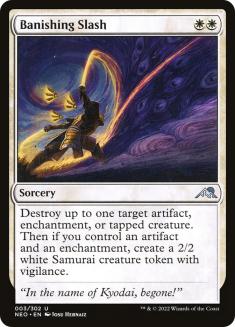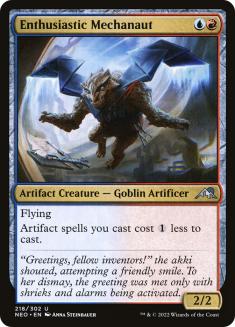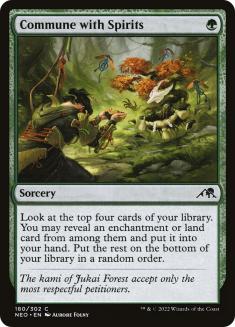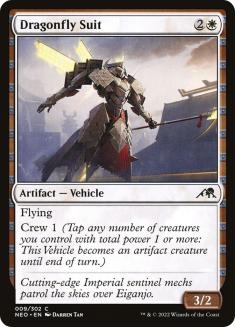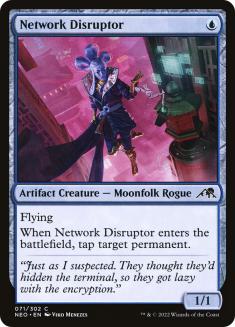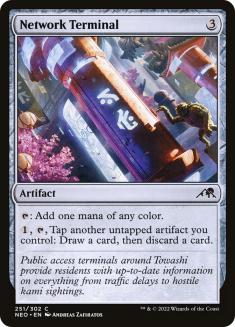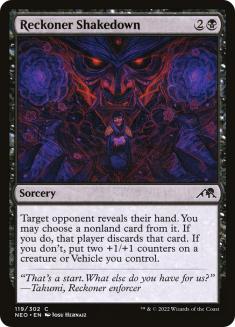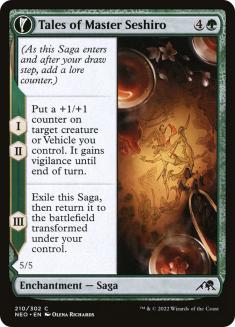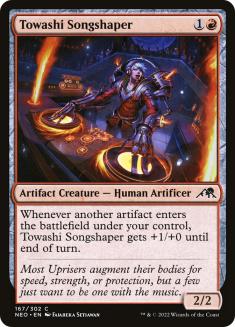Kamigawa: Neon Dynasty is a draft format with an incredible amount of depth. Not only is every color pair viable, but there are multiple ways to draft all of them. Most decks can play both aggressive roles and defensive roles, which leads to some of the most compelling gameplay of any Limited format I can remember. Jockeying for the position of the beatdown is the name of the early-game, but the earlier you can identify who’s going to win that battle, the better you can position yourself to either win early or turtle up, stabilize, and turn the corner.
Now that I have many drafts under my belt, I have a strategy that works very well for me. Earlier this week, I shared an overview of the top commons and colors on Twitter. While this doesn’t tell you my strategy, it helps paint a picture that I build from, so give it a quick read if you haven’t already:
To summarize, every color is playable with the right suite of cards and synergies. Blue, black, and green stand out as the best, but for different reasons. Both blue and black have a bunch of commons I’m happy to first-pick, but green has none. However, almost all of green’s commons are above-rate (C+ level), while the black and blue commons fall off significantly after the top four or five. So what does this mean?
First, it means I end up in green in a majority of my drafts. If I don’t have a secondary color solidified by the time cards begin to wheel, there’s a high probability the best cards in the pack that wheel are green, and hence green becomes my secondary or primary color. I’m not the only person to have this observation, but my draft strategy deviates from the norm. Most players I have talked to who observe this lean into green. They take the green commons artificially higher because the probability they end up in green is higher. I understand where this comes from, and it’s a reasonable strategy, but I think there’s an even better one when it comes to maximizing your win-rate:
Your first few picks should be high-risk, high-reward.
Taking green cards is low-risk. None of them are power-level standouts, and it’s really hard to draft a bunch of green cards and end up in a bad deck. But because you can always end up in a solid green deck, I think it’s better to have that be your backdoor strategy, and spend your first picks on powerful plans that don’t always work out. I should note that I’m not telling you to pass strong green uncommons like Kappa Tech-Wrecker or Blossom Prancer. I’m slamming those Pack 1, Pick 1 all the time. But I’d be hard-pressed to take any green common in the first few picks. Instead, I try to take blue cards with a bias towards Dimir Ninjas, but note that I’m still open to every color, and there are also black, white, and red cards I’m happy to first-pick.
The reason for this is that I think the best versions of the blue aggressive decks are the best decks in the format, with Dimir being the cream of the crop. These blue aggressive decks are great at getting ahead, gaining card advantage, and even playing to the late-game through countermagic, evasion, card advantage, and interaction. The fact that they can play any role, and the common quality of the best commons in blue surpasses all the other colors, is what leads to this bias.
However, blue isn’t always open. The good blue cards like Moonsnare Specialist and even Network Disruptor get taken pretty highly. Sometimes you start a draft with a Disruptor, and by the end of Pack 1 it seems very unlikely that an aggressive blue deck is a viable path. And that’s okay. That’s what green is for. If an aggressive blue deck doesn’t present itself, it’s because other players at the table are pursuing that strategy. So, not only is green the deepest color, but it pairs the worst with blue as an aggressive strategy, hence if other players are pursuing blue aggro, the probability green is open increases.
These observations meld together to a really powerful strategy. I can bias towards an aggressively slanted blue deck, and if it doesn’t pan out, I’m almost guaranteed to be able to successfully pivot into green. Simic may not care for Network Disruptor, but it loves Moonsnare Specialist and The Modern Age, so you don’t lose many picks if you stick to blue.
However, you can be any green color pair if you need to pivot out. You can open a great rare in Pack 2 and end up pairing that with green. You can draft Golgari, which is a common scenario given I like pairing blue with black, and again not give up all that many picks. The whole point here is that this strategy leaves you open to draft the two best decks in the format: blue aggressive decks and green good-stuff decks. And, if you bias towards green at the beginning of Pack 1, it becomes much harder to draft those blue aggressive decks that are so strong.
The last point to make is that, while I’m calling these “blue aggressive decks,” that doesn’t mean you have to be all-in and not play more expensive cards that are strong. I’m still going to take Behold the Unspeakable, an incredible yet slow uncommon, Pack 1, Pick 1. And I will still draft an assertive blue strategy and put that card in the deck. The reason for this, which I highlighted earlier in this article, is that blue decks can play any role. So it’s still good to play cards of the highest quality.
Okay, so with that in mind, let’s jump into a draft. Will I end up blue, green, or both? It’s very unlikely I end up neither!
Pack 1, Pick 2
The Picks So Far:
The Pack:
The Pick:
Oni-Cult Anvil is an awesome and powerful card. It’s exactly what I want out of a gold uncommon, and I think it’s reasonable to take it Pack 1, Pick 1. That being said, I don’t take it over the best commons, so Moon-Circuit Hacker is the card to beat out of this pack. The only question is whether having Eater of Virtue makes me more incline to go towards Rakdos than a blue deck. Eater works extremely well with Oni-Cult Anvil because turning a 1/1 into a 3/1 is a big game. However, I’m inclined to believe Eater of Virtue is better in blue than any other color. Flying is one of the most impactful keywords to put on a creature, especially when in an archetype that cares about ninjutsu. I think all this adds up to Moon-Circuit Hacker still being better than Oni-Cult Anvil.
Weaver of Harmony is a solid rare. There are quite a few of ways to gain value from the ability, and green has a lot of enchantment creatures. I wouldn’t fault anybody for taking the card, but I honestly don’t think what it provides to a green deck is better than what Moon-Circuit Hacker provides to a blue deck. Given my current draft strategy, this leads to taking Moon-Circuit Hacker.
Hacker is one of my favorite commons. While I take other blue commons over it, I adore the play patterns. Having a one-mana ninjutsu ability sets up chains of ninjutsu at the end of combat for additional value. Turning Moonsnare Specialist into Capsize with Moon-Circuit Hacker is one of my favorite things to do in the whole format. Additionally, observe that Hacker is the only blue card in this pack so I have the benefit of being able to cut blue entirely. If you were on the fence about taking the Hacker here, maybe that helps push you over the edge!
Pack 1, Pick 6
The Picks So Far:
The Pack:
The Pick:
While there’s nothing fantastic in this pack, I find the pick really interesting. Brute Suit is a reasonable artifact beater for these blue decks because cards like Moon-Circuit Hacker eventually get blanked. That doesn’t make Hacker bad, as it usually has already provided more than enough value, and then being able to jump into a Vehicle takes it over the top. That being said, I’m not a huge fan of Brute Suit, so I don’t feel the need to take it here. Then again, the other options aren’t much better.
Moonsnare Prototype can be quite strong in specifically Izzet decks that have ways to leverage the mana advantage, which looks like a probable outcome of this particular draft. However, I don’t think I’m going to miss it all that much, and it won’t make any of my other blue decks. So while it looks solid given this pool, I think it’s not the right card to take here.
Greater Tanuki and Fade into Antiquity are solid green cards. They’re not first-pick quality, but no green common is. They’re C+ cards where the first copy always makes my green decks, and I’m usually happy to take the second copy too. Between the two of them, I would rather take Fade into Antiquity, but I can’t blame anybody for taking Tanuki instead.
This pick boils down to Fade into Antiquity and Brute Suit. I think this pick is relatively close. There are a few things that lead me to take Brute Suit over Fade here. First, It’s simply more likely to make my deck with this current start. Second, Eater of Virtue alongside multiple great blue commons leads me to be less likely to want to pivot into green. And lastly, there’s a chance Oni-Cult Anvil wheels and I have to throw away quite a lot of picks to pivot into Rakdos artifacts. In this case, a filler Vehicle with crew 1 may actually be important.
At this point, I could really be many decks. As expected, I ended up with a good number of playable green cards at the end of Pack 1, opening the door to a green deck just as I outlined at the beginning of this article. However, a Moon-Circuit Hacker wheeled in Pack 1 in a pack that didn’t contain other blue cards, which gives me some confidence that staying blue and assertive could pay off.
This pack has quite a few options, and even an exciting mythic. Take time to review the pool, and then let me know what you would take!
Pack 2, Pick 1
The Picks So Far:
The Pack:
The Pick:
Junji, the Midnight Sky is a very powerful mythic rare. Since I picked up some green cards at the end of the draft, it’s not crazy to take it and try to be base Golgari, maybe splashing for some powerful cards already in my pool like Moonsnare Specialist. However, in this case, I don’t think it’s a good idea. Scroll up to the previous decision at Pack 1, Pick 6. Notice anything particular about that pack? There are no black cards! While Junji is a great mythic rare, and I can technically support any secondary color if I choose green as my primary color, taking Junji has a high probability of not working out, so I don’t think you can justify it. Black was not open in Pack 1.
After recognizing that, the next question is, “What am I most likely to draft from here?” If it’s Simic, this pick is between Commune with Spirits, Greater Tanuki, and Moonsnare Specialist. If it’s Gruul, the correct pick is probably Tales of Master Seshiro as a fantastic Saga that supports modification. And if the answer is Izzet, then the pick is between Enthusiastic Mechanaut, Network Disruptor, and Moonsnare Specialist.
My current opinion is that I’ll either be Simic or Izzet. While Gruul is certainly an option, I’m putting reasonable stock in wheeling that Moon-Circuit Hacker from Pack 1. Simic tends to splash around, and if I am splashing, I think Greater Tanuki is probably the most important pick. But there may be an assertive version that would really want the Moonsnare Specialist. My first conclusion is that Moonsnare Specialist is the safe pick. Regardless of where I end up, that Specialist is going to be a great card. However, that’s not what I took.
I took Network Disruptor and I stand by it. The combo of Network Disruptor and Moon-Circuit Hacker is a one-two-punch that takes blue decks to trophies. My pool already has two copies of Moon-Circuit Hacker, but I don’t have any copies of Network Disruptor. The fact of the matter is I’m most likely to be an aggressive Izzet deck, with a possible artifact theme. Pushing towards that with Network Disruptor maximizes the ceiling of both the best, and most likely, deck that I can draft from this position. While Moonsnare Specialist is an awesome and safe pick, if I don’t end up with Network Disruptor in my Izzet deck, it’s going to be a problem.
Lastly, I think passing Enthusiastic Mechanaut also helps maximize my deck in the end. It’s possible there’s another Izzet drafter, but it’s also possible there’s not. While Mechanaut is probably slightly better than Network Disruptor in my Izzet deck, it’s not by much. Since it has a reasonable chance to wheel, I think it’s better to take the Disruptor.
And let me tell you, I was very happy with that pick. I ended up with three copies of Network Disruptor, and they were amazing. When I played with this deck, it felt like I was playing a different format and I had a massive deck advantage over all of my opponents. I like to think I got the elusive 9-0: a 7-2 trophy where both losses were due to mistakes I made because the deck is pretty difficult to pilot.

